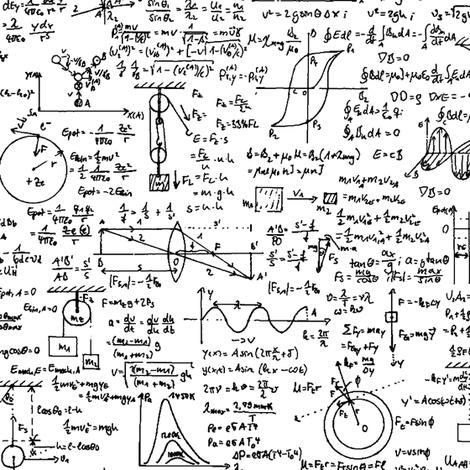
In your time taking physics courses, you will likely run into one that deals with equation sheets. These can be note cards or an entire sheet of paper, and anything that can fit on it is fair game and can be brought into a test. The natural reaction might be to try to cram and squeeze an entire textbook on those sheets using really, really tiny handwriting, but this is probably not the most efficient use of your time.
The first introduction physics class I took let us fill out such a sheet for each exam, front and back. I proceeded to cram every relevant equation that had been covered by lectures onto that one sheet. This worked fine for the first exam, but reality came back to bite me for the second test. Even though my sheet was packed to the brim with useful equations, I had no idea how to apply them, and my score dropped considerably.
It’s been years and many physics courses since that first class. I’ve taken classes that allow equation sheets and open notes, and ones that don’t allow anything. Through all the exams I’ve taken, I have found the following to be true about equation sheets, especially as the material gets more involved.
On the positive side of things…
- They can give you a sense of what material has been covered so far and what you need to study
- On the exam, they serve as a safety net for when you blank on an equation
However…
- They won’t give you intuition for how to approach problem-solving – this only comes with practice!
- Because of space constraints, they won’t give you a deep and thorough understanding of topics covered on the test
Quickly review the material first to determine what will be on the test.
This can involve reading notes, textbook chapters, past homework assignments, etc. As you review, think about what concepts are covered on the test and what kinds of problems are likely to be asked.
Assemble your sheet based on what you reviewed in Step 1.
Try not to write down every version of the same equation, and if you are using an expression that applies to a specific case (like an approximation) make sure you understand and indicate that it is a special case. If you focus on understanding everything that goes on the sheet, this is another means of studying!
Run through practice problems and practice tests using the sheet you made.
You may find that there are topics where you depend heavily on the sheet and others where you don’t even have to look. This is usually an indication of how well you understand the material, and you can focus your studying and amend the equation sheet based on this.These methods have that worked for me, but each person is different. Ultimately, you may have to experiment a bit to find your own tried-and-true approach. But, I hope this post has helped at least somewhat. If you start off by using these sheets intuitively and strategically, you won’t make the same mistakes I did!
Comments